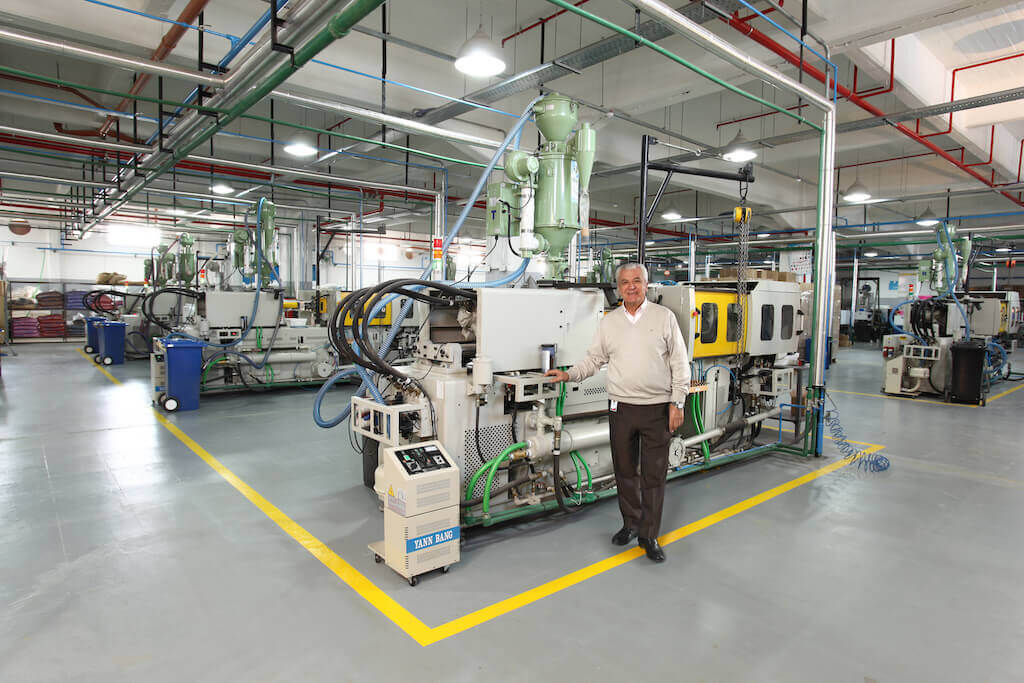The Argentinian company Juguetes Rasti was founded in 1965 by Antonio Dimare, an Italian immigrant with a passion for making toys. The original Rasti line, a set of building blocks that could be attached together to form different objects, soon became popular throughout Latin America.
However, when the Chinese influx of cheaply- made toys hit in the 1980s and 1990s, toy markets all around the world suffered, and Argentina was no exception. Juguetes Rasti had several lines of products that were still going strong, but they were forced to shut down production on their signature construction toy.
In spite of challenges and difficulties, Rasti is now being led by a full slate of second-generation siblings: Daniel, Fabian, Sergio, Gabriel and Sabrina. Together, they have realised a 21st-century strategy to making the business thrive through innovation. They even relaunched production on the Rasti construction toy line in 2007. Today, the history of Juguetes Rasti is a source of inspiration for the local entrepreneurial community.
Recently, Tharawat Magazine spoke with Daniel Dimare, Marketing Director of the company, to discuss working alongside four siblings and managing the balance between innovation and tradition in the toy industry.

How has the industry changed and evolved since your father Antonio founded Juguetes Dimare in 1965?
The toy industry around the world was forever changed by the invasion of cheap Chinese toys. In the 1980s and 1990s, it almost destroyed the toy industries of many countries and certainly affected our production line. We had to adapt and focus on cost optimisation, process automation and branding.
In more recent years, the emergence of different technologies has taken children away from the traditional, creative games designed to aid their development. We cannot fight these trends so we incorporate them into our products. In 2016, we needed to add a doll to our blocks line. Instead of creating a normal doll, we developed a “mutant” model that allows the child to assemble the doll and transform it into different types of real or even fantasy characters. We also give our customers the possibility to produce on-demand pieces with 3D printing technology.
On the other hand, today’s tendency to entertain children through gadgets and apps has also resulted in a renewed demand for traditional toys that allow parents to share quality time with their children. The trend cuts both ways.

Tradition and innovation often collide when a company moves from one generation to the next. How has innovation impacted your business?
We embrace innovations that serve to rejuvenate the brand and the company. We are adopting new technologies to increase the enjoyment from playing with our toys, but designing products that stimulate the child’s development is always our utmost priority.
In 2004, we started to incorporate new technologies such as robotics and programming into traditional toys. The idea was to help stimulate children’s brains while introducing them to the technologies of tomorrow. For instance, we recently released Castillo de Fuego, a game that involves augmented reality technology. Children can use blocks to build a traditional castle that, when viewed through a tablet or smartphone, will also show animated characters that can be controlled using the device.
Juguetes Rasti has received numerous awards and attention from the international media. What makes your toys different?
We specialise in offering fun and stimulation for children through innovative and educational toys. We appeal to adults because they either played with our toys in their childhood or they’ve adopted us as a “detox” from the overabundance of digital entertainment children are exposed to. We focus on parents and families who want less screen time and more creative play for their children. I believe this allows us to differentiate ourselves and obtain a better competitive position within the toy market.
Another element that sets us apart from other toy companies is our “free play” constructions line. These toys come with a mix of completely different pieces and no instructions. Providing an image to replicate doesn’t stimulate creativity because it simply requires the child to follow instructions. Instead, we want children to be free to use their imagination and create all different types of constructions without any kind of limitation.
[ms-protect-content id=”4069,4129″]
As the Marketing Director of Juguetes Rasti, you work closely alongside four siblings. For some families, that could make for a tricky working environment. How have you been able to make it work?
I think the key to making it work so well is that we love what we do. We all joined the company voluntarily, without any kind of pressure from our parents or relatives. We were naturally drawn to business from a very early age, and we all chose a business-related program at university – from marketing and strategic management to advertising, family business management, finance, logistics and administration.
Each of us is responsible for one specific area of the business, and our responsibilities do not overlap with one another. This prevents us from stepping on each other’s toes by giving instructions to another sibling’s subordinate, for example. At the family level, we socialise with each other to make sure we keep up with what is going on in each other’s lives.

How does being a family business inform the toys you produce? Do you think it is an advantage in this industry?
Our identity as a family is key for us, not only with our customers but also with our employees and suppliers. We don’t see people as a number on an income statement. The family love that surrounds us is essential and extends to the whole company.
We strive to be valuable entrepreneurs rather than just successful entrepreneurs.
We aim to put this into practice by designing products that can be used as a family – toys that stimulate and teach children and generate love for the brand. I do believe this gives us a huge advantage over profit-driven international toy brands.
Does this extend to a sense of social and community responsibility as well?
We have a strong sense of corporate social responsibility. We are currently collaborating with a non-governmental organisation to provide work for people with disabilities, and this has been a great way to foster creative innovation for our brand.
In partnership with this organisation, we developed a product entirely designed and created by people with disabilities – including the packaging.
We also like to support the emerging entrepreneurial community by offering seminars and speaking at different events to share our experience as a small or medium-sized company. The relaunch of the Rasti brand in 2007 is even used as a case study in a local business school. We are living proof that it is possible to revitalise and relaunch a brand, even in a small to medium-sized company.
What is the future of toys? What will children play with in 20 years?
The traditional analog toy will continue to thrive as a critical element to stimulate children’s development. The need for toys as a creative and shared game between children or between children and adults will always be present. I believe there
will always be a need for respite from the digital, isolated entertainment that technological devices offer. The new challenge will be how to make toys attractive to children and trusted by parents.
[/ms-protect-content]














